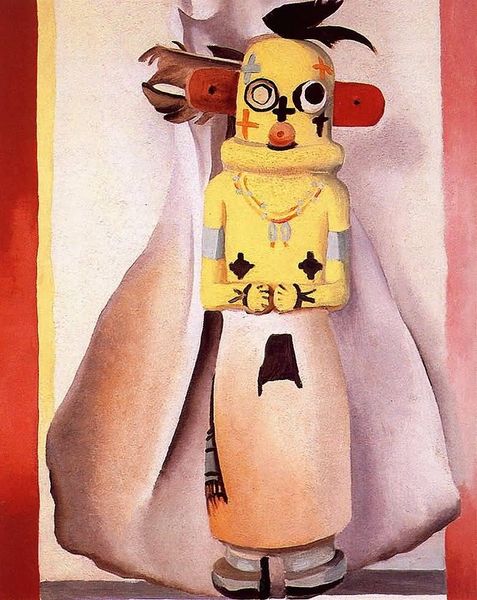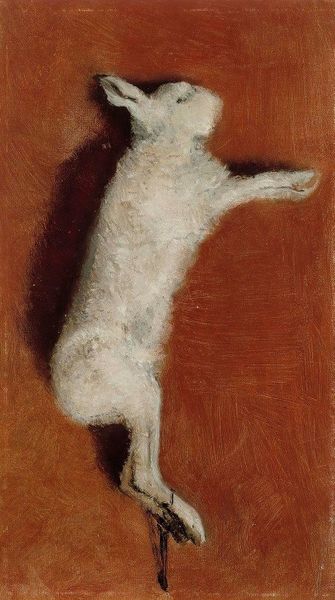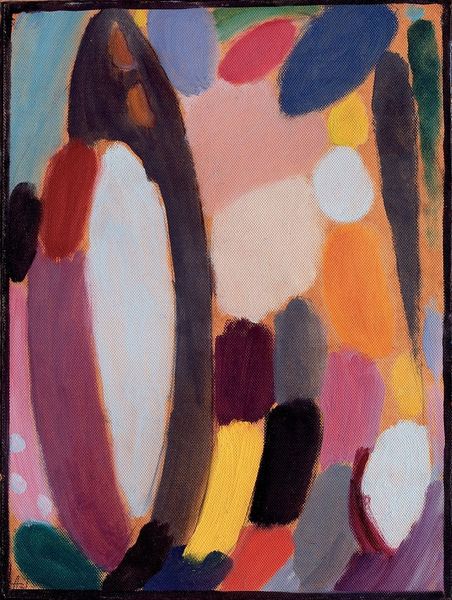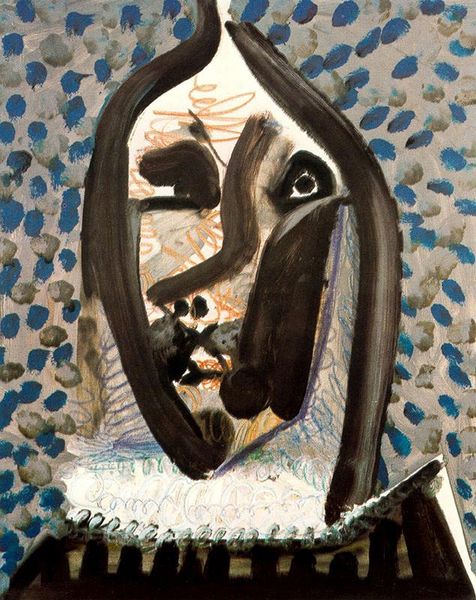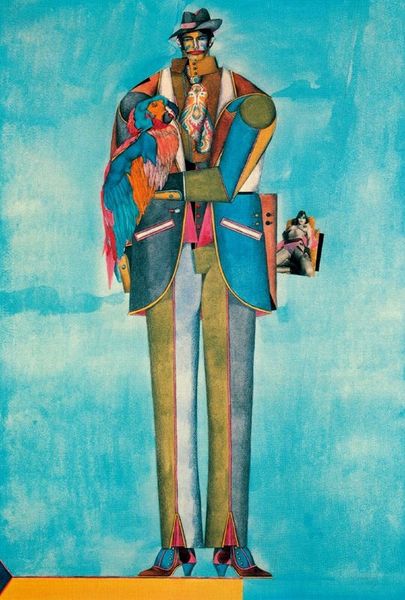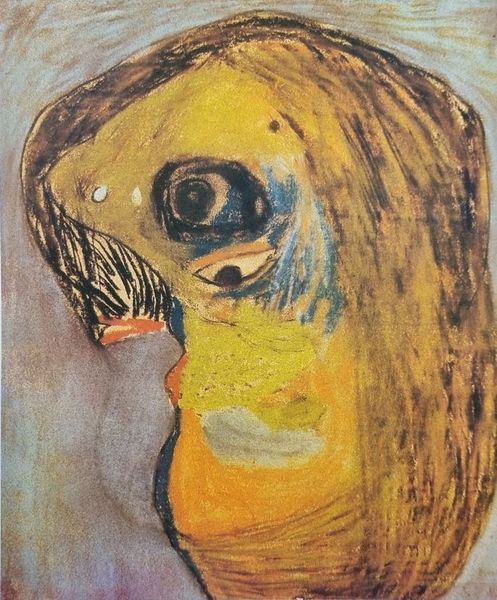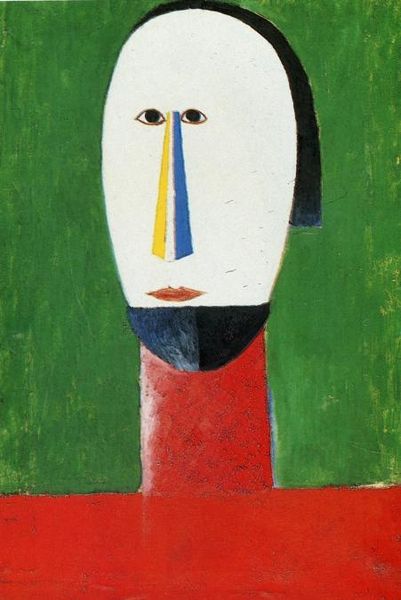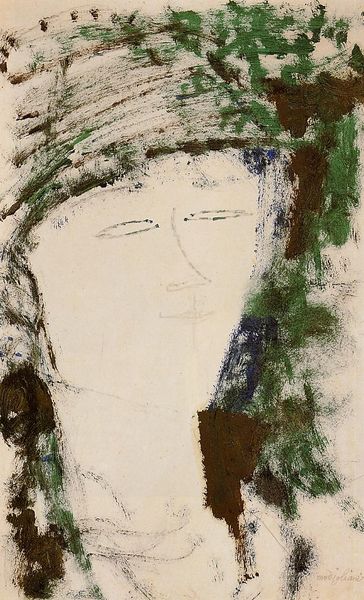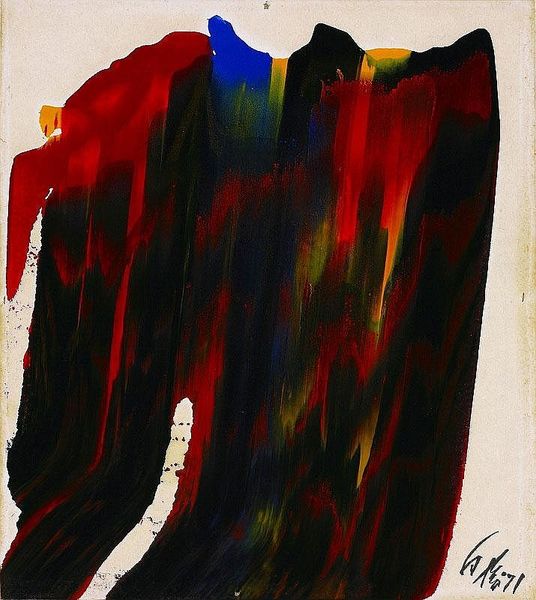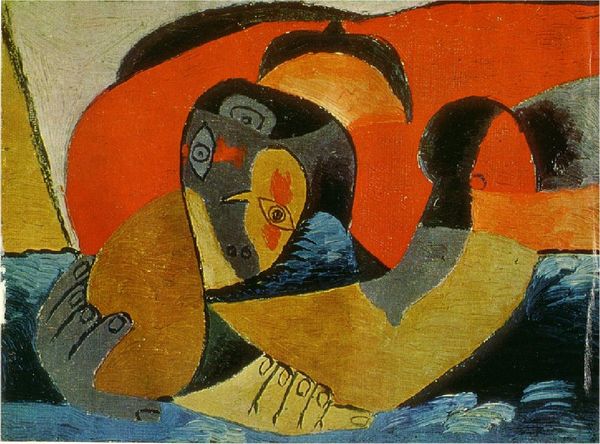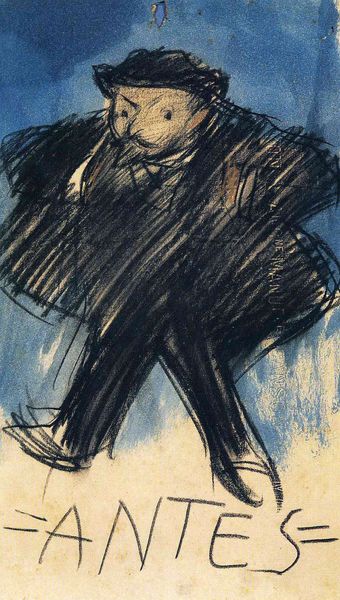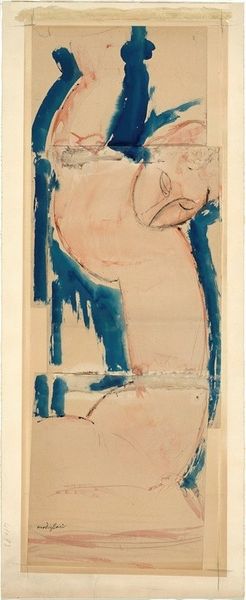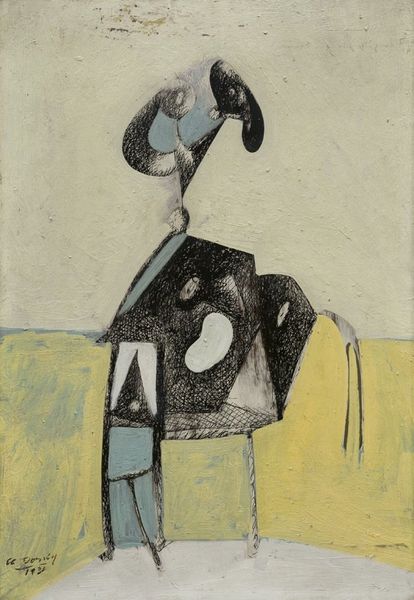
painting, oil-paint
#
portrait
#
painting
#
oil-paint
#
soviet-nonconformist-art
#
figuration
#
oil painting
#
geometric
#
abstraction
#
modernism
Dimensions: 55 x 44.5 cm
Copyright: Public domain
Curator: Kazimir Malevich created this painting, "Head of Peasant", in 1934. It's executed in oil paint, reflecting his Soviet Nonconformist period. What strikes you initially about this stark image? Editor: The rawness! Look at that surface. I can almost feel the thickness of the oil paint and see the hasty, visible brushstrokes. It's immediately evocative of labor and materiality. The anonymity implied is almost unnerving. Curator: Precisely. Note the striking economy of form. We observe an oval, divided starkly between black and white, resting above a crimson rectangle all framed by a rough azure. Consider the semiotic weight: The absent face directs us to what, or rather, who is not visible. Editor: Yes, the anonymity of the faceless figure speaks volumes, but it’s a crafted absence, a decision born from the socio-political landscape. Could Malevich be commenting on the loss of individuality, the collectivization imposed on farmers and workers during that period? I wonder, did the choice of coarse materials speak to the commonality, the earthiness, of his subject? Curator: It's difficult to ascertain intent with absolute certainty. However, observe the strategic composition of flat planes of colour and how the restricted palette generates a mood of starkness and melancholy. The visual effect resonates as a formal and emotive expression. Editor: For me, the painting is as much about what is shown as about how it’s shown, what’s left behind in the studio’s process. I think it captures both the literal and metaphorical weight that peasantry were under during collectivization in the Soviet era. Curator: So, from a minimalist arrangement, Malevich generates complex tension. Editor: Absolutely, Malevich prompts us to consider how social realism intertwines with pure abstract representation, reminding us of art's potent role in reflecting our material existence and lived experiences. Curator: A painting with deceptively simple structural elements concealing multiple intricate meanings. Editor: Yes, a stark material reminder that sometimes the loudest statements are made in near silence.
Comments
No comments
Be the first to comment and join the conversation on the ultimate creative platform.
